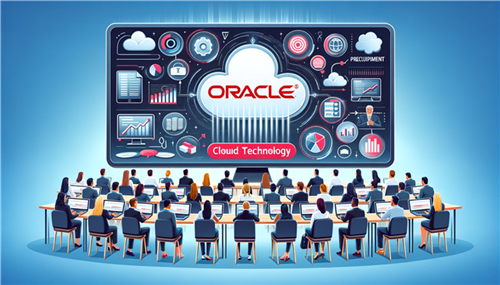AWS was always considered as the best storage solution and leads as a cloud platform. AWS is slowly being replaced by a newbie in town and that is none other than another cloud storage platform – Azure. Though Azure entered the market late but it has been successful in leaving a mark in the cloud computing market. Azure is gradually becoming famous among IT pros, thanks to its wide arrays of tools.
It is important to understand the differences as well as the similarities that they possess if one wishes to opt for any one of them.
Table Of Contents
-
Compute
-
Storing Capabilities
-
Networking Capabilities
-
Pricing Methods
-
Open Source Integrations
-
Containers and Orchestration Support
-
Compliance
-
User friendliness Levels
-
Hybrid Cloud Capabilities
Here's a table comparing the features and services of AWS and Azure:
|
Features/Services |
AWS |
Azure |
|
Compute |
Amazon Elastic Compute Cloud (EC2),
AWS Lambda, Elastic Beanstalk, Auto Scaling |
Azure Virtual Machines, Azure Functions,
Azure Container Instances,
Azure Kubernetes Service, Azure Batch |
|
Storage |
Amazon Simple Storage Service (S3),
Amazon Elastic Block Store (EBS),
Amazon Elastic File System (EFS),
AWS Storage Gateway |
Azure Blob Storage, Azure File Storage,
Azure Queue Storage,
Azure Table Storage, Azure Disk Storage |
|
Database |
Amazon Relational Database Service (RDS),
Amazon DynamoDB, Amazon Redshift,
Amazon ElastiCache |
Azure SQL Database, Azure Cosmos DB,
Azure Database for MySQL,
Azure Database for PostgreSQL,
Azure Cache for Redis |
|
Networking |
Amazon Virtual Private Cloud (VPC),
Elastic Load Balancing (ELB), AWS Direct Connect,
AWS Global Accelerator |
Azure Virtual Network, Azure Load Balancer,
Azure ExpressRoute, Azure Traffic Manager |
|
Security |
Amazon Inspector, AWS Certificate Manager (ACM),
AWS Identity and Access Management (IAM),
AWS Key Management Service (KMS) |
Azure Security Center, Azure Active Directory,
Azure Key Vault, Azure DDoS Protection |
|
Analytics |
Amazon Kinesis, Amazon EMR, Amazon QuickSight |
Azure Stream Analytics, Azure HDInsight,
Azure Data Factory,
Azure Analysis Services |
|
AI and Machine Learning |
Amazon SageMaker, Amazon Rekognition, Amazon Lex |
Azure Machine Learning, Azure Cognitive Services |
|
Internet of Things (IoT) |
AWS IoT Core, AWS IoT Analytics, AWS IoT Greengrass |
Azure IoT Hub, Azure IoT Edge |
|
Developer Tools |
AWS CodeCommit, AWS CodePipeline, AWS CodeBuild,
AWS CodeDeploy |
Azure DevOps, Azure App Service, Azure Functions |
|
Management Tools |
AWS CloudFormation, AWS CloudTrail,
AWS Config, AWS Systems Manager |
Azure Resource Manager, Azure Monitor,
Azure Service Health,
Azure Advisor |
|
Pricing |
Pay-as-you-go model, reserved instances, and
spot instances |
Pay-as-you-go model, reserved instances, and
spot instances |
Compute
AWS gives users the freedom to create their own Virtual Machines. They choose size, power, memory capacity etc. themselves, whereas Azure allows users to choose a Virtual Hard Disk (VHD) to create a Virtual Machine. The users are required to specify the amount of cores and memory while choosing a VHD.
Storing Capabilities
AWS allows temporary storage allocated once the instance is created and demolished when it is terminated.
AWS supports relational and NoSQL databases as well as Big Data.
On the other hand, Azure provides temporary storage through D Drive and block storage through Page Blobs for Virtual Machines. Like AWS, Azure also supports relational databases, NOSQL and Big Data but through Azure Table and HDInsight. Azure is also capable of conducting site recovery and Import Export and taking Azure Backup for archiving and recovery options.
Networking Capabilities
Since Amazon offers Virtual Private Cloud (VPC), users are able to create isolated networks within the cloud. A VPC allows users to create subnets, route tables, private IP address changes and network gateways. The same can be accomplished via the Virtual Network (VNET) offered by Azure.
Pricing Methods
Both the solutions offer pay-as-you-go service. The only difference lies in the rate at which they charge. AWS charges per hour while Azure charges per minute basis. Charging per minute provides an accurate pricing model.
Open Source Integrations
Amazon offers a good number of open source integrations including Jenkins and GitHub.
Azure offers native integrations for Windows development tools such as VBS, SQL database and Active Directory. Though Microsoft hasn’t always been keen on embracing the open source model, Azure has managed to update itself. For example, companies are now able to run Red Hat Enterprise Linux and Apache Hadoop clusters in Azure.
Containers and Orchestration Support
Amazon and Microsoft both have kept themselves up-to-date with the new services and offerings.
While Amazon has added machine learning tools and features targeted at IoT, Microsoft offers Hadoop support with Azure Insight.
They both have been able to retain their competition in this area of meeting new demands and offering the latest services and technologies.
Compliance
AWS and Azure, both adhere to the government compliance offerings. Both the platforms possess certifications in ITAR, DISA, HIPAA, CJIS and FIPS, among many others. They allow only screened persons to access the cloud, which is essential and primary for security reasons, specially for organizations handling sensitive information.
User friendliness Levels
Though AWS offers more features and configurations, it requires a lot more learning as compared to
Azure. Azure makes it easy for users to integrate on-premises Windows servers with cloud instances to create a hybrid environment while AWS demands a lot of learning and training to use the power, flexibility and customization that it offers.
Hybrid Cloud Capabilities
Amazon has recently involved itself in building hybrid cloud capabilities while Microsoft has always had a strong support for hybrid cloud services with platforms like Azure StorSimple, Hybrid SQL Server and Azure Stack.
Looking at all the domains, it is quite difficult to decipher which one is better. Choosing any one of them mainly depends upon the requirement and suitability of a user or business. It is very obvious that cloud computing is here to stay and the cloud war will drag on. Thus, the two will continue to inculcate superior capabilities and keep themselves at par with each other.
.pngL.jpg)

min.pngM.jpg)
.pngM.jpg)



.pngM.jpg)
COMMENT